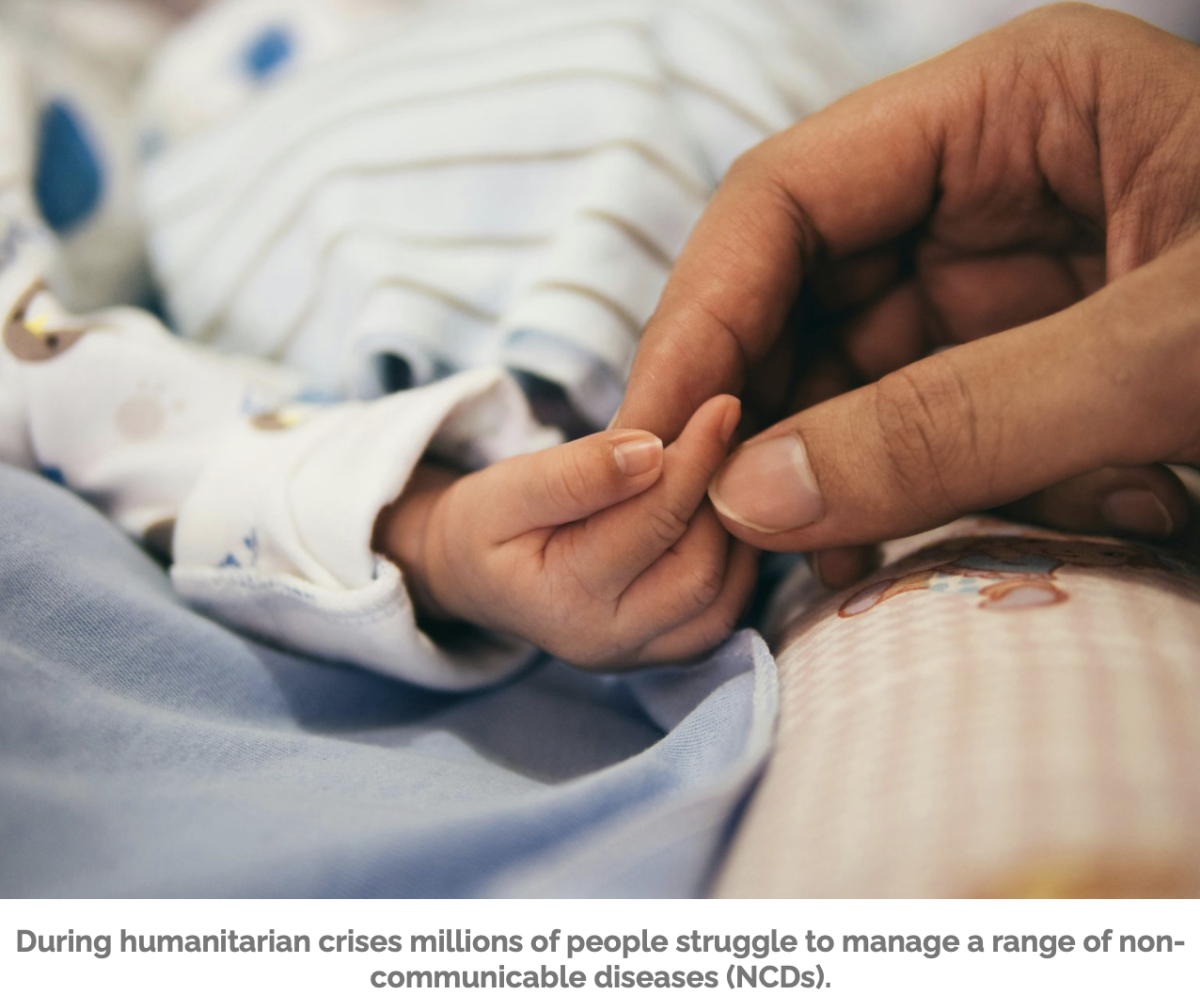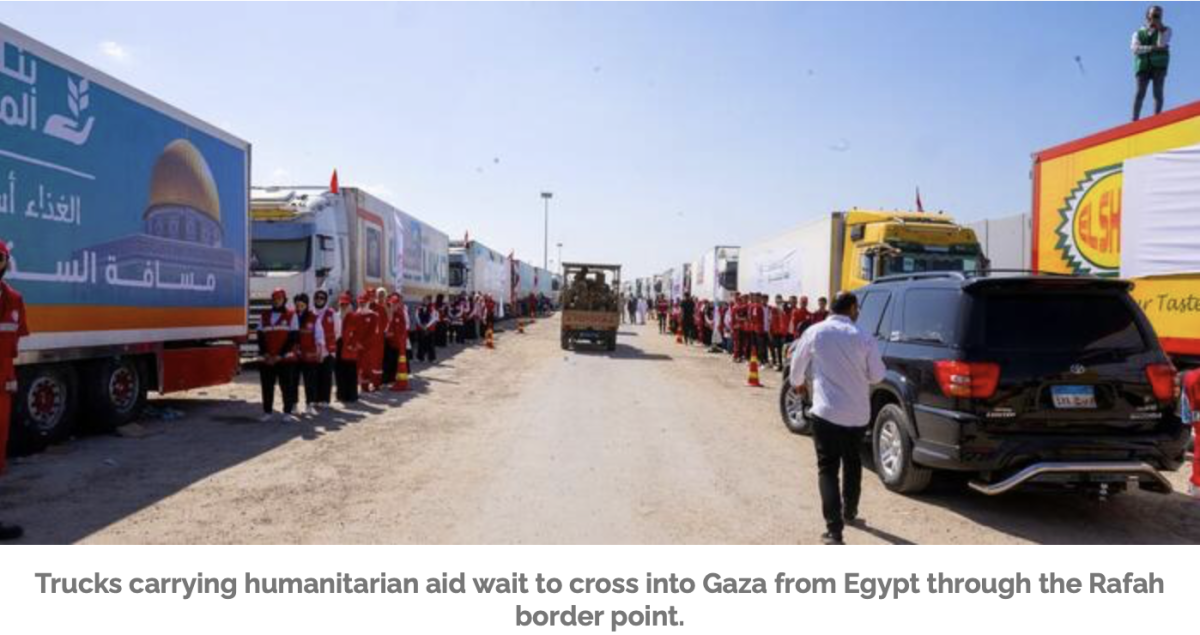CLAN (Caring & Living As Neighbours)
Round 2 Grant Opportunity: Adressing Congenital Adrenal Hyperplasia
22 Apr 2024
Health Policy Watch | 14 Feb 2024
The United Nations estimates that 363 million people are currently impacted by humanitarian crises driven by increasing fragility and conflict, the climate crisis and widening inequality. Around 108.4 million people were forced to flee their homes in 2022, meaning one in every 74 persons globally.
Humanitarian crises, such as those occurring in Ukraine, Gaza, Libya, Somalia and Sudan may vary in nature and scale but they all share population displacement, the destruction of infrastructure and the disruption of supply chains and services.
Health is one of the first casualties. Increasingly, healthcare facilities and supply chains are directly targeted in conflict. Restricted or impeded access to hospitals, health services and staff and life-saving medicines and technologies, as well as food and water shortages, make life precarious.
Much media attention during crises understandably tends to focus on overwhelmed hospitals and what that means for women giving birth, vulnerable newborns and war-wounded people needing life-saving surgery.

Outbreaks of infectious diseases such as measles and cholera also make the headlines. Yet the parallel reality is that during humanitarian crises millions of people struggle to manage a range of non-communicable diseases (NCDs) such as diabetes, hypertension or cardiovascular illness. Access to their essential medications and health professionals may be non-existent.
Policymakers are now being forced to take an ‘all hazards approach’ to emergency planning and response, together with an inclusive health and humanitarian response that leaves no one behind.
There are plenty of factors to consider: increasing fragility, widening inequality, uneven economic growth, a fragmented geopolitical landscape, inadequate financing, the potential for new pandemics, and climate crisis encroaching on and shifting the way societies produce, eat and live.
Of course, the degree to which countries are able to respond to health emergencies will depend on the scale of the crisis they face at any given time, the financial situation, preparedness, and how resilient the health system is.
Many low- and middle-income countries have fragile health infrastructures to begin with, and when faced with crises, they are much more vulnerable. But the success of an emergency response is more likely if established models of care and strong partnerships between government and civil society are already in place.
Partnering for Change – a collaboration between humanitarian organisations, the International Committee of the Red Cross (ICRC) and the Danish Red Cross (DRC), and the private sector company, Novo Nordisk – was launched to identify best practice to support people living with diabetes and hypertension in humanitarian crises. They have partnered with academia, the London School of Hygiene and Tropical Medicine (LSHTM) in research initiatives to design, evaluate and improve models of care.
Since 2020, the ICRC has supported a primary health care service run by the local NGO Chabab Al Ataa Al Jazeel Association (CAJA) in Bireh in Northern Lebanon. Initial research from P4C with patients, caregivers and service providers highlighted patients’ multiple care needs and the huge burden families faced in navigating a fragmented care system.
Improving the patient-centeredness of care by integrating cardio-metabolic disease management with mental health and physical rehabilitation services with defined referral pathways, and a joint patient management system was seen as a potential solution. An adapted integrated model was developed and is currently being implemented. In parallel, an evaluation is being conducted for a better understanding on how to implement, sustain and scale up this type of integrated model for NCD care in humanitarian settings.
Outside of Partnering for Change, the Danish Red Cross is supporting the Somali Red Crescent Society, one of the biggest health care providers in Somalia, in its efforts to integrate screening and management of diabetes, hypertension and asthma as well as mental health and psycho-social support into already existing health programmes.
They have until now mostly focused on maternal and child care but decided to include NCD care and prevention based on needs assessments. As well, Somali Red Crescent Society are seeking to include focus on health-promoting behaviour, NCD prevention and awareness of risk factors through community engagement and community health committees.

A recent report on the financing of NCD care in humanitarian settings has pointed to the essential role of community-engagement in reaching people early, before conditions become serious and require costly hospital-level care.
These kinds of interventions are hopefully a window into the future, further building on what already exists. The idea of integrated care across the non-communicable and infectious disease spectrum has slowly been gaining traction: both the U.S. President’s Emergency Plan for AIDS Relief (PEPFAR) and the Global Fund now include NCDs in their HIV and tuberculosis financing portfolios.
Yet more evidence is still needed to adequately demonstrate that integration is cost-effective. To address this gap, a recent report has looked into how integrated NCD care can save resources for both patients and health systems. Patients benefit the most – about 85 per cent of the total savings. From a health-system perspective, the extra cost to integrate these programmes are relatively small compared to the positive health outcomes they generate.
While delivering these integrated care services in humanitarian settings logistically still remains a leap into the unknown, the rationale for financing them is clear – if we are to achieve Universal Health Coverage, NCD services must be integrated into community services and primary healthcare facilities to ensure that people living with these chronic diseases have access to quality services across the continuum of care and during disruptions in care from disasters or conflict.
We’ve heard the growing calls for health services to be protected during conflicts. We’ve seen first-hand the growing alignment of climate change and health agendas at the recent COP 28 meeting. Now, we need to see political will that better responds to an uncertain future for the growing number of people living with NCDs and that guarantees their right to health.